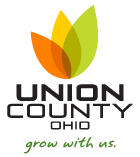Bokes/Mill Watershed Partnership
Bokes/Mill Creek Watershed Partnership
An informal subdivision of the Union Soil and Water Conservation District
Established in September 2001, the Bokes/Mill Creek Watershed Partnership is an informal subdivision of the Union Soil and Water Conservation District. Composed of landowners, farmers, municipal officials, government entities, environmental interest groups, and the industrial community, the Partnership was formed to address the pollution sources affecting the Bokes Creek and Mill Creek Watersheds.
Our Mission
The mission of the Bokes/Mill Creek Watershed Partnership is to involve the local community in the improvement and protection of the water quality and wildlife of Bokes Creek and Mill Creek to ensure the needs of future generations.
Subcommittees
When originally formed, there were four subcommittees based on specific pollution concerns:
- The Administrative subcommittee develops and publicizes educational programs and events, and obtains funding to support day-to-day activities and programs/events of the Partnership.
- The Nonpoint Source - Habitat subcommittee is striving to reduce the frequency of flooding due to logjams, improve water quality by decreasing sediment and nutrient loading, and increasing habitat.
- The Point Source Pollution subcommittee is working to reduce ammonia levels in Bokes Creek and Mill Creek and to increase the level of dissolved oxygen necessary to support stream life.
- The Water Supply subcommittee's goals are to implement programs designed to protect the drinking water supply and increase awareness of streams as sources of drinking water.
Bokes/Mill Watershed Coordinator
Although environmental regulation had been successful in decreasing pollution from "point sources", it was recognized that if Ohio was to further increase the water quality in the state, it would need to focus on "nonpoint source" pollution. With that goal in mind, the Ohio EPA, Ohio Department of Natural Resources, the Ohio State University Extension, and the state legislature got together and contributed funds for watershed-specific employees to focus on nonpoint source pollution.
With the support of the Bokes/Mill Watershed Partnership, a grant was approved for a coordinator in the Bokes Creek and Mill Creek Watersheds, combined. Starting in 2001, the grant fully funded a watershed coordinator, and by 2007, the position was a permanent position at Union SWCD, funded through the Union Soil and Water Conservation District, Union County Commissioners, The City of Marysville, the Scotts Miracle-Gro Company, and state match funds. With the decreased activity of the Bokes/Mill Watershed Partnership, but with other stakeholders still involved, the position has evolved into what is now the Urban Technician position.
The Union Soil and Water Conservation District and the United States Department of Agriculture (USDA) prohibit discrimination in their programs based on race, color, national origin, sex, religion, age, disability, political beliefs, and marital or familial status.
